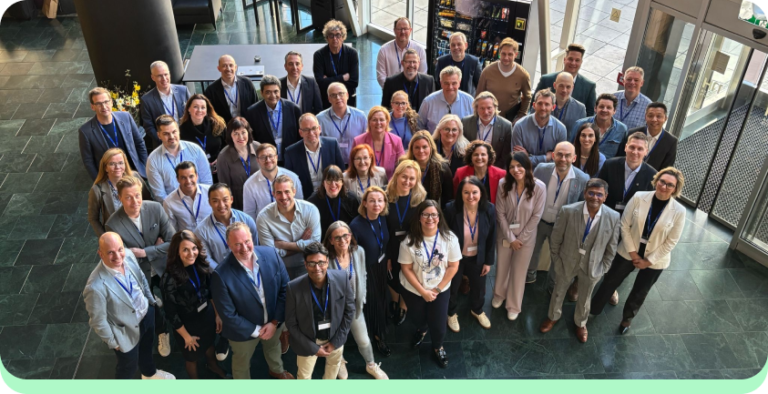Hiring the right person starts long before you post a job ad. It begins with a deceptively simple question: What work actually needs to get done? In our experience at Meijer & Co, this is where many recruitment processes go off track. Too often, the intake kicks off with a fixed job title, a long list of requirements, maybe a location, without even focusing on what’s most important: defining the work the needs be done and the actual skills one might need to do them successfully.
But defining a role by title, years of experience required, seniority level, and a location can be somewhat compared to buying a house based on the furniture. You might end up with something that looks right on paper but doesn’t serve your long-term needs. The smartest hiring decisions begin by zooming out: What outcomes do we need? What problems does this person need to solve? What would success look like for them in six months, in one year?
But how to get started on this, and introduce this new mindset within your hiring community? We collected a couple tips, hopefully they’ll be helpful:
- Start with the work, not the label
Before you jump to titles like “Marketing Manager” or “Operations Lead,” pause. These labels can lock you into a predefined structure and potentially stop you from achieving what you actually want to achieve. Instead, start by defining the work: What are the business priorities this role should support? What is the need behind this new hire? How will this new addition to my team make my organisation better, and help me achieve my goals faster?
Once you’re clear on these deliverables, only then start shaping the role around it. Maybe it needs to be full-time. Maybe not. Maybe it fits into an existing job title. Maybe it doesn’t. The role should emerge from the needs, not the other way around.

- Don’t just replace, but rethink
If someone is leaving, there’s often pressure to replace or backfill them quickly. But people are people, and your positions shouldn’t be plug-and-play. They leave behind not just tasks but influence, soft skills, and habits. So use this moment to reassess.
What parts of their work are still relevant? What can be redistributed? What’s no longer necessary or newly required? Defining the work with fresh eyes often leads to a reshaped role, or even the realisation – and this might sound weird from a recruitment company – that there shouldn’t be a role at all.
- Forget the ideal candidate and focus on their added value
It’s easy to picture an “ideal candidate”: they have five years of experience, speak three languages, and have worked in X, Y or Z industry before. But that picture is often just a projection of your comfort zone.
Try this instead: What specific contribution do we expect from this person in the first three to six months? What kind of impact do we want them to have after a year?
This way of thinking pulls you away from surface-level filters (like education or titles) and into meaningful hiring criteria. It also opens the door to completely fresh talent pools and people with unconventional backgrounds, who may be exactly what your team needs.
- Consider the team, not just the individual
No new hire works in isolation. They’ll be part of a system with its own dynamics, strengths, and blind spots. So also, take a strong look at the team as well. What capabilities already exist there? Where are their pain points? Who complements whom?
An intake discussion with the hiring manager should ideally also include points of view from the team as well. If the team is full of detail-oriented planners, maybe you need a challenger who pushes for big-picture thinking. Or if the team is high-energy but disorganized, and a calm, process-driven person might be the missing piece.
Encourage your hiring manager to invite a senior member of the team to join the intake call. That person gets exposure, and learns new skills regarding hiring and you’ll have the chance to get a clearer picture on what the team actually needs. An absolute win-win to all.

- Translate soft wishes into real behaviours
We’ve all seen job ads asking for “strong communication skills” or a “self-starter mentality.” But what do those actually mean? Speaking confidently on the phone or giving presentations on the daily?
At Meijer & Co, we always ask: In this role, how would that skill show up? Yes, communication might mean presenting to clients or simply being upfront and comfortable with using Slack for internal communication. A self-starter might mean taking ownership of vague problems, or you would need someone who is not afraid to start their Monday independently, without you needing to set their goals weekly.
The more specific you get, the easier it becomes to assess whether a candidate can deliver not just in interviews, but once they’re actually on the job.
- Last but not least: leave space for the unexpected
The goal of an intake, or the first conversation with your hiring community, is not to build a checklist. It’s to define the core needs and then stay open-minded about how they might be met. You will come across some of the best hires in the most unconventional ways. They might not tick every box, but can bring energy, perspective, or the diversity you didn’t know you were missing.
Final thoughts
A strong intake session is where thoughtful hiring begins. It’s not about filling an empty seat, it’s about solving a problem and a need. At Meijer & Co, we believe that if you ask better, honest and open questions early on, you make better hiring decisions down the line. And the ultimate question always remains: what am I hiring for? And if you can’t answer that, then probably you shouldn’t. Because hiring to hire is not an art – it’s a waste of your time and resources.


